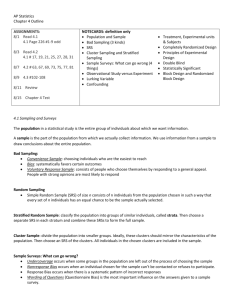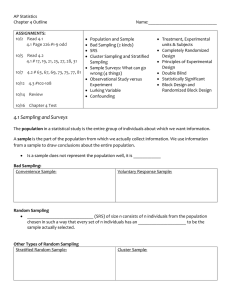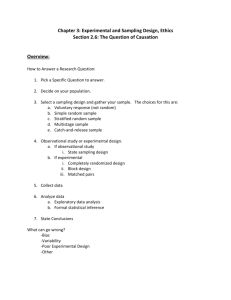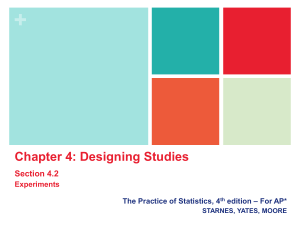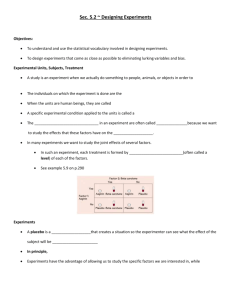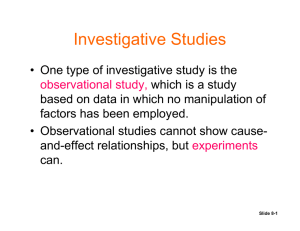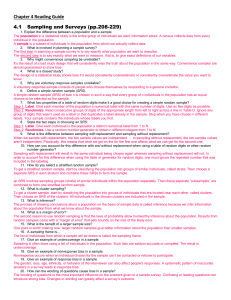Review
advertisement
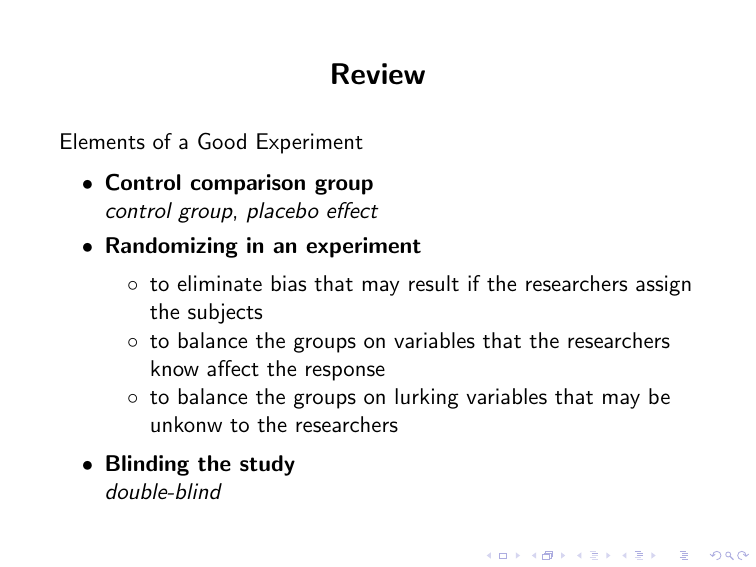
Review Elements of a Good Experiment • Control comparison group control group, placebo effect • Randomizing in an experiment ◦ to eliminate bias that may result if the researchers assign the subjects ◦ to balance the groups on variables that the researchers know affect the response ◦ to balance the groups on lurking variables that may be unkonw to the researchers • Blinding the study double-blind • ordinary random variation. • statistical significance When the difference between the results for the two treatments is so large that it would be rare to see such a difference by ordinary random variation, we say that the results are statistically significant. Key Parts of a Good Experiment • A good experiment has a control comparison group, randomization in assigning experimental units to treatments, blinding, and replication. • The treatments are the experimental conditions imposed on the experimental units. The treatments correspond to values of an explanatory variable. • Randomize in assigning the experimental units to the treatments. This tends to balance the comparison groups with respect to lurking variables. • Replicating the treatments on many experimental units helps, so that observed effects are not due to ordinary variability but instead are due to the treatment. Repeat studies to increase confidence in the conclusions. Other Random Sampling Designs (other than Simple Random Sampling) • Cluster Random Sampling Divide the population into a large number of clusters. Select a simple random sample of the clusters. Use the subjects in those clusters as the sample. This is a cluster random sample. • Stratified Random Sampling A stratified random sample divides the population into separate groups, called strata, and then selects a simple random sample from each stratum. In practice, more than one sampling methods can be applied. Retrospective Observational Studies (backward looking) • Case-Control Study A case-control study is a retrospective observational study in which subjects who have a response outcome of interest (the cases) and subjects who have the other response outcome (the controls) are compared on an explanatory variable. Prospective Observational Studies (forward looking) Multifactor Experiments • Categorical explanatory variables in an experiment are often referred to as factors. Matched Pairs Designs • help to keep potential lurking variables from affecting the results. Blocking Designs • to reduce possible bias, treatments are usually randomly assigned within a block.

